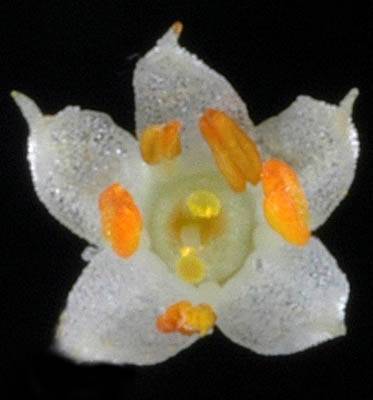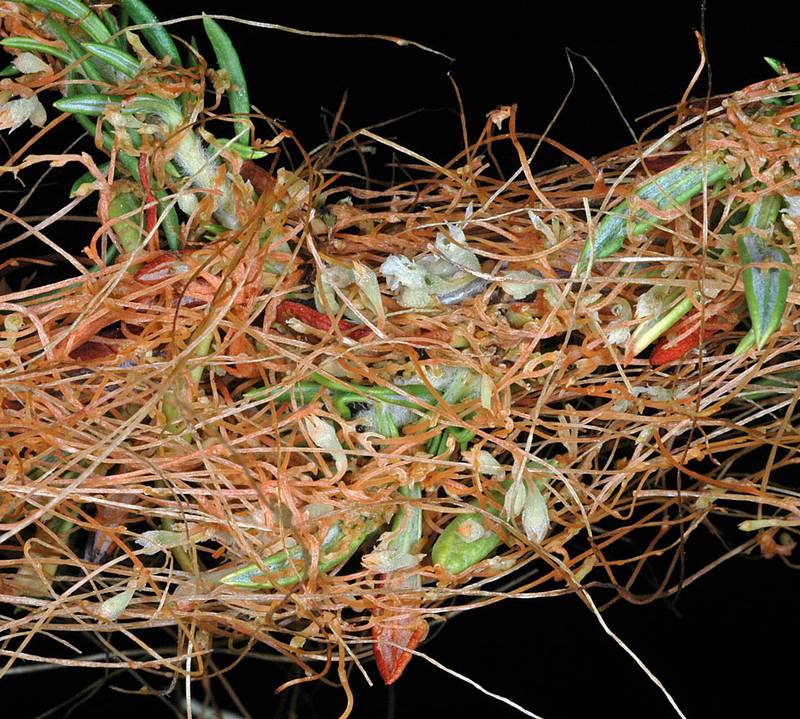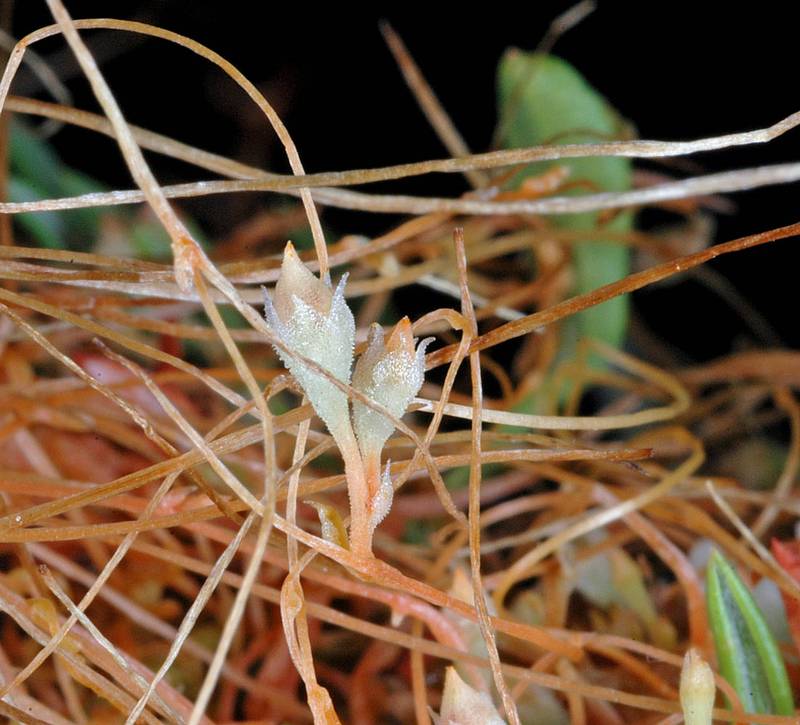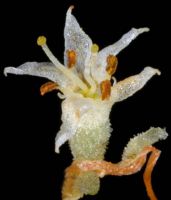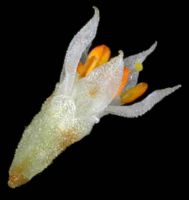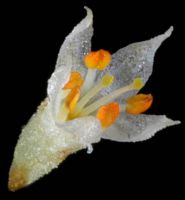Distribution: Occurring east of the Cascades crest in Washington; Washington to California, east to Idaho and Colorado.
Habitat: Seasonally wet or alkaline meadows, vernal pools, and openings.
Flowers: June-August
Origin: Native
Growth Duration: Annual
Conservation Status: Not of concern
Pollination: Bees, wasps
Parasitic, twining, annual or perennial herbs, with very slender, pinkish-yellow to white, glabrous stems, often forming large mats.
Leaves reduced to tiny scales.
Flowers usually sessile in small clusters; calyx about 2 mm. long, the lower half fleshy, the 5 lobes triangular, nearly 1 mm. long, acuminate, the tips spreading slightly; corolla slightly longer than the calyx, broadly bell-shaped, conspicuously pouched between the sepals, the 5 lobes lanceolate-acuminate, spreading, slightly longer than the tube; stamens 5, inserted just below the sinuses of the tube, slightly exerted; filament scales lacking; styles 2, 1-1.5 mm. long; ovary superior, 2-celled.
Capsule globose, not circumscissile.
Publication: Publ. Field Columbian Mus., Bot. Ser. 5: 204. 1923.
PNW Herbaria: Specimen records of Cuscuta occidentalis in the Consortium of Pacific Northwest Herbaria database
WA Flora Checklist: Cuscuta occidentalis checklist entry
OregonFlora: Cuscuta occidentalis information
E-Flora BC: Cuscuta occidentalis atlas page
CalPhotos: Cuscuta occidentalis photos

